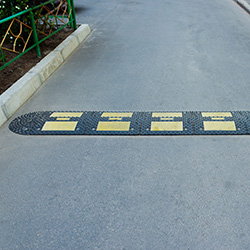Speed control measures play a crucial role in enhancing road safety and traffic efficiency. These measures help regulate vehicle speeds, reduce accidents, and create a safer environment for both drivers and pedestrians. One effective method of speed control is the use of speed bumps, which are physical traffic calming devices installed on roads to slow down vehicles.
Types of Speed Control Measures
Speed control measures encompass a variety of methods aimed at managing and regulating vehicle speeds on roads. Some common approaches include:- Signage: Utilizing clear and visible signs to inform drivers of speed limits and potential hazards ahead.
- Speed Limits: Establishing legal speed restrictions for different types of roads and areas to control vehicle speeds.
- Enforcement: Implementing measures such as speed cameras and police monitoring to ensure compliance with speed regulations.
The Role of Speed Bumps
Speed bumps serve as vital physical traffic calming measures designed to reduce vehicle speeds in specific areas. They are typically elevated sections of the road that require vehicles to slow down significantly when passing over them. The effectiveness of speed bumps lies in their ability to physically disrupt the flow of traffic, making drivers more cautious and attentive. There are several types of speed bumps commonly used:- Traditional Speed Bumps: These are raised sections across the road, usually made of asphalt or rubber, that span the entire width of the street.
- Speed Humps: Longer than traditional speed bumps, speed humps are designed to moderate speeds rather than force a complete stop.
- Speed Cushions: Speed cushions are similar to speed bumps but have cutouts to allow larger vehicles like emergency vehicles to pass through more comfortably while still slowing down other vehicles.
Case Study: Implementing Speed Bumps in a Residential Area
Let’s delve into a real-life example of a residential community that implemented speed bumps to tackle speeding concerns and enhance safety within their neighborhood. The community of Maple Street in Greenfield decided to address the recurring issue of speeding vehicles endangering residents and pedestrians along their street. After conducting surveys and gathering feedback from residents, the decision was made to install speed bumps as a proactive measure to regulate vehicle speeds. However, the process of implementing speed bumps was not without challenges. Some residents expressed concerns about the aesthetics of the speed bumps and potential noise levels generated by vehicles passing over them. Additionally, there were logistical hurdles to overcome in terms of securing approval and funding for the project. Despite these challenges, the impact of the speed bumps on the neighborhood was significant. Residents reported feeling safer while walking or cycling along Maple Street, and there was a noticeable decrease in the speed of vehicles passing through the area. The installation of speed bumps not only improved road safety but also fostered a sense of community ownership and collaboration in addressing shared concerns.FAQs on Speed Bumps and Speed Control
Here are some common questions related to speed bumps and speed control measures along with concise answers to address reader queries:- Q: What are speed bumps? A: Speed bumps are raised devices placed on roads to reduce vehicle speeds by creating a physical obstacle that vehicles must slow down for.
- Q: How effective are speed bumps in controlling vehicle speeds? A: Speed bumps are effective in slowing down vehicles, especially in areas where there is a need to reduce speed for safety reasons.
- Q: Are there different types of speed bumps? A: Yes, there are various types of speed bumps including traditional speed bumps, speed humps, and speed cushions, each designed for specific traffic calming purposes.
- Q: Do speed bumps impact vehicle fuel efficiency? A: While speed bumps may cause a slight decrease in fuel efficiency due to the need to decelerate and accelerate, the overall impact is minimal for most vehicles.

